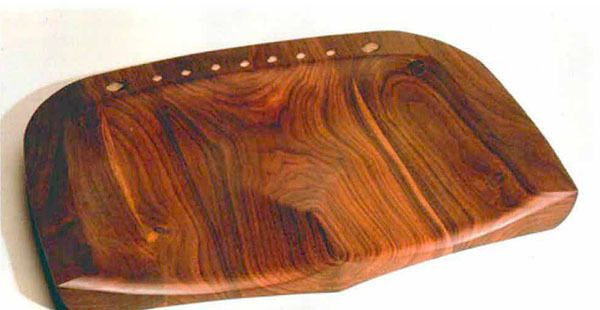Working Highly Figured Wood
Mix hand-tool and machine methods for tearout-free surfaces
Synopsis: Until Peter Tischler became familiar with the underlying structure and reasons behind beautiful grain and figure, he had difficulties working the surfaces of such solid woods. In this comprehensive article, he starts by defining grain and figure, and then he explains how to plane, scrape, and sand and harden the wood by hand and by machine. Side information explains how to block-plane figured wood without tearout, and another side article addresses smoothing knots and filling gaps. Additional photos and explanations show how different approaches work for different figures.
Cabinetmakers usually save woods with high figure and bold grain to showcase the prominent features of their work, such as tabletops, door panels or drawer fronts (see the top photo on the facing page). But until I became familiar with the underlying structure and reasons behind beautiful grain and figure, I had difficulties working the surfaces of such solid woods.
I’ve since built many furniture pieces using wood with pronounced grain and figure. Along the way, I developed some unusual methods to cope with these showy woods. I’ve found a combination of hand-tool and machine techniques can overcome tearout and make surfacing go more smoothly. I’ll share these tips as well as what I’ve learned about what causes some common figures and grain patterns and offer suggestions for working them (see the story on p. 48).
Understanding grain and figure
Because descriptions can be ambiguous, it’s helpful to first define a few terms that describe wood’s characteristics. Consider grain as the cell arrangement and direction of the fibers in the wood. (For more on this, see FWW #95, p. 58.) Texture is the differences in cell size and density between early (spring) wood growth and late (summer) wood growth. Early and late wood account for contrasts in color, as shown in the chair seat photo on p. 46. Color differences can also occur as you move outward in a log. The heartwood (center) of a tree is usually darker than the sapwood nearer the bark. Figure is a little harder to define. It refers to the patterns that appear on the radial and tangential faces of a board. Figure actually has to do with the light-reflecting properties of the wood. A further explanation of this is given in R. Bruce Hoadley’s book, Understanding Wood (The Taunton Press).
Highly figured woods are also highly prized, so the best quality logs usually go to the veneer mills. This allows more of us to see and work the woods that have distinct signatures of nature. (For a gallery of figured veneers, see FWW #89, pp. 44.)
From Fine Woodworking #105
Fine Woodworking Recommended Products

Odie's Oil

Osmo Polyx-Oil

AnchorSeal Log and Lumber End-Grain Sealer






















Log in or create an account to post a comment.
Sign up Log in